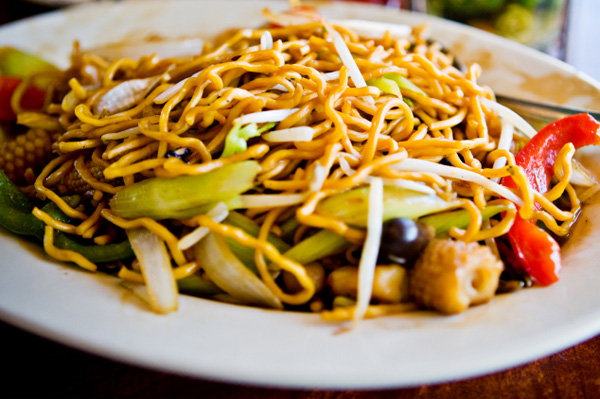Easy Food Recipes Biography
Source(google.com.pk)The Han Dynasty imperial kitchens grew vegetables in hothouses, so their availability was not limited by the season. In the final years of the Eastern Han Dynasty food sweetened with honey began to appear in the palace.
It is said that during the period of the Three Kingdoms (A.D. 220 - 280), Cao Zhi, Prince of Chenliu and son of Cao Cao, made a thick soup of camel’s hooves that cost 1,000 ounce of gold. Cao Zhi called it “Seven-Treasure Soup.” Cao Cao usurped the power by taking the emperor hostage and acting in his name during the final years of the Eastern Han Dynasty, so their eating habits were representative of the palace customs. They paid great attention to the variety, taste, and flavor of food, and to the quality of the dinnerware. By that time, it had become fashionable to drink tea in the palace instead of wine.
Stir-frying was the chief cooking method during the Southern and Northern Dynasties (A.D. 420 - 589), and stir-fried dishes became popular as everyday meals among the common people. Buddhism was spreading in China by this time, and vegetarian dishes began appearing because the Buddhist monks ate vegetarian food. In response to the demand for vegetarian dishes, the cooks of Emperor Wu of the Liang Dynasty (502 -557) introduced the use of gluten.
After the Han Dynasty, thick soup became a less important non-staple food, and roasted, broiled, and baked meats were eaten only when people drank wine; they were not eaten with cooked rice. Some famous delicacies appeared during this period, and they were given special names that reflected Chinese history and culture. In previous dynasties, the names of dishes reflected how the dishes were cooked. (The naming of dishes is discussed in greater detail in the later chapter, “How Chinese Dishes Were Named.”)
The technique of using fermentation to make staple foods, such as steamed buns, stuffed buns, and steamed cakes, which are still popular foods today, was already being used in the final years of the Han Dynasty. Other staple foods were baked cakes and noodles.
The system of people taking separate meals, which was popular before the Han Dynasty, changed gradually into joint meals with several people or a family sitting together around a table, as is done today. The gradual change began with the use of wooden armchairs. This transition took more than 1,700 years.
The imperial food of the Sui, Tang, and Song Dynasties (581 - 1279) followed the system and rules of preceding dynasties, but the varieties of food and meal procedures changed tremendously. During Yang Di’s reign in the Sui Dynasty (enthroned 605 - 618), seafood appeared much more frequently on imperial menus.
The imperial dishes of the Sui and Tang Dynasties (581 - 907) had far greater variety than did the dishes of previous dynasties, and more attention was paid to their flavor, taste, color, presentation and naming. Famous imperial dishes that have been passed down to today include fried ringing bells, quick – fried prawns, crab rolls, crystal dragon and phoenix cakes, and steamed Mandarin fish without soy sauce.
The characteristics, habits, and customs surrounding food in the Southern and Northern Dynasties and in the Sui and Tang Dynasties belong to the same period. There were also similarities in the imperial food prepared and served in the Song and Yuan Dynasties (960 - 1368). And, there is almost no difference between the food of the Ming and Qing Dynasties (1368 - 1911) and the food served today.
Easy Food Recipes Food Recipes for Dinner For Kds with Pictures In Urdu Desserts Pinoy In Hindi in Sinhala Language for Kids to Make in Sri Lanka

Easy Food Recipes Food Recipes for Dinner For Kds with Pictures In Urdu Desserts Pinoy In Hindi in Sinhala Language for Kids to Make in Sri Lanka

Easy Food Recipes Food Recipes for Dinner For Kds with Pictures In Urdu Desserts Pinoy In Hindi in Sinhala Language for Kids to Make in Sri Lanka

Easy Food Recipes Food Recipes for Dinner For Kds with Pictures In Urdu Desserts Pinoy In Hindi in Sinhala Language for Kids to Make in Sri Lanka

Easy Food Recipes Food Recipes for Dinner For Kds with Pictures In Urdu Desserts Pinoy In Hindi in Sinhala Language for Kids to Make in Sri Lanka

Easy Food Recipes Food Recipes for Dinner For Kds with Pictures In Urdu Desserts Pinoy In Hindi in Sinhala Language for Kids to Make in Sri Lanka

Easy Food Recipes Food Recipes for Dinner For Kds with Pictures In Urdu Desserts Pinoy In Hindi in Sinhala Language for Kids to Make in Sri Lanka

Easy Food Recipes Food Recipes for Dinner For Kds with Pictures In Urdu Desserts Pinoy In Hindi in Sinhala Language for Kids to Make in Sri Lanka

Easy Food Recipes Food Recipes for Dinner For Kds with Pictures In Urdu Desserts Pinoy In Hindi in Sinhala Language for Kids to Make in Sri Lanka

Easy Food Recipes Food Recipes for Dinner For Kds with Pictures In Urdu Desserts Pinoy In Hindi in Sinhala Language for Kids to Make in Sri Lanka

No comments:
Post a Comment